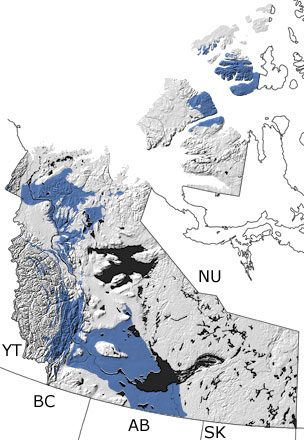Paleontology and geologyThe northern and western parts of the Northwest Territories were covered by shallow to deep waters of the continental shelf for most of the Devonian. The eastern half was above sea level and covered by different species of ferns and lycopsids (scale trees). Pollen, spores, and fragments from these plants occasionally were carried out to sea along with sediments eroding from the land. In the shallow waters, corals and stromatoporoids built up reefs, which were home to a great variety of invertebrates, including brachiopods, bivalves, trilobites, gastropods, ostracods, crinoids, conodonts, sponges, cephalopods, conodonts, and eurypterids. These warm waters also harbored many different fish, such as agnathans (jawless fish), heterostracans (armored jawless fish), lobe-finned and ray-finned fish. Fossils of these animals and plants can be found in some of the sandstones, siltstones, shales, and limestones that are exposed in many places throughout the territory. By the end of the Devonian, a collision with another tectonic plate to the northeast began to fold, fault, uplift, and erode some of these and older rocks in the Arctic Archipelago. |





